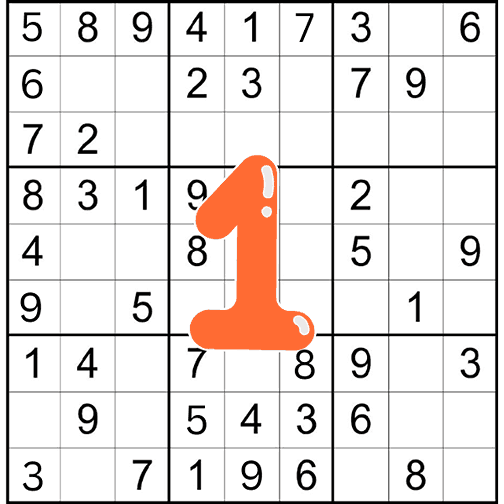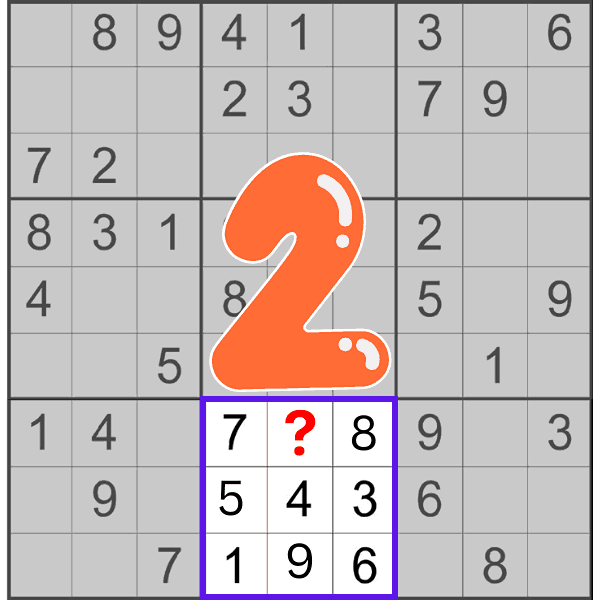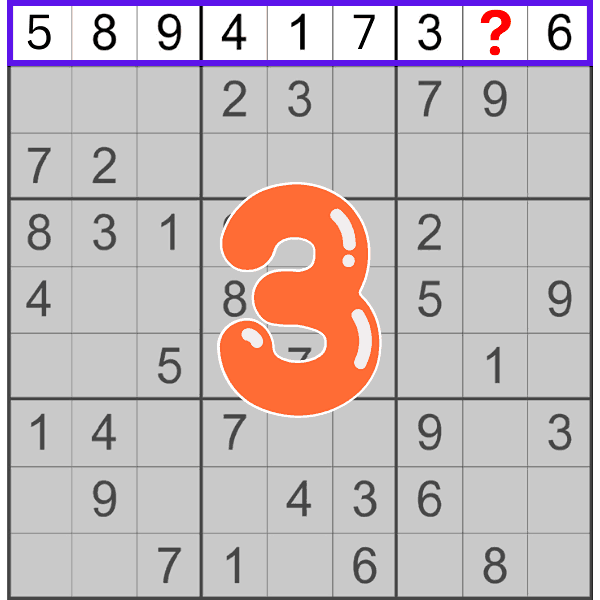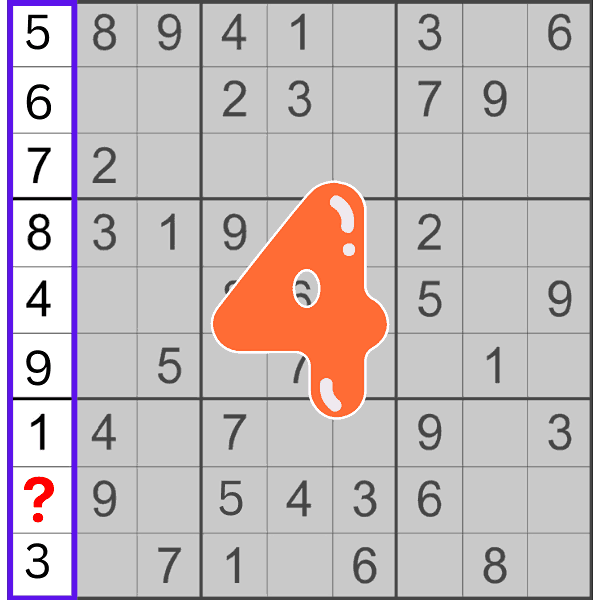The fundamental Sudoku-solving technique known as ‘Last Free Cell’ or ‘Last Empty Cell’ is very popular. It’s easy and involves the simple rule that every 3×3 box, vertical column, and horizontal row in a Sudoku grid has to contain all the numbers from 1 to 9 with each number appearing only once.
In example 1 below there is a Sudoku puzzle you are going to solve. Now as shown in image 2 identify a 3×3 square where only one number is missing. As we know every 3×3 square must contain numbers 1 through 9 only once. Hence the missing number is ‘2’.


Now as shown in image 3 identify a row where only one number is missing. As we know every row must contain numbers 1 through 9 only once. Hence the missing number is ‘2’. As shown in image 4 identify a column where only one number is missing. As we know every column must contain numbers 1 through 9 only once. Hence the missing number is ‘2’.


Thus, if there is only one blank cell within any of these nine squares or columns or rows, it’s easy to determine which digit (from 1 through 9) is missing and place it into this gap. Look at the ‘Last free cell’ technique as your initiation into the world of Sudoku. This basic strategy once mastered opens doors to advanced techniques that will make you solve even the most difficult puzzles. It’s like learning the alphabet before writing essays; on achieving this phase one becomes more skillful in dealing with Sudokus.
To practice more DOWNLOAD your free printable Sudoku puzzle book now!